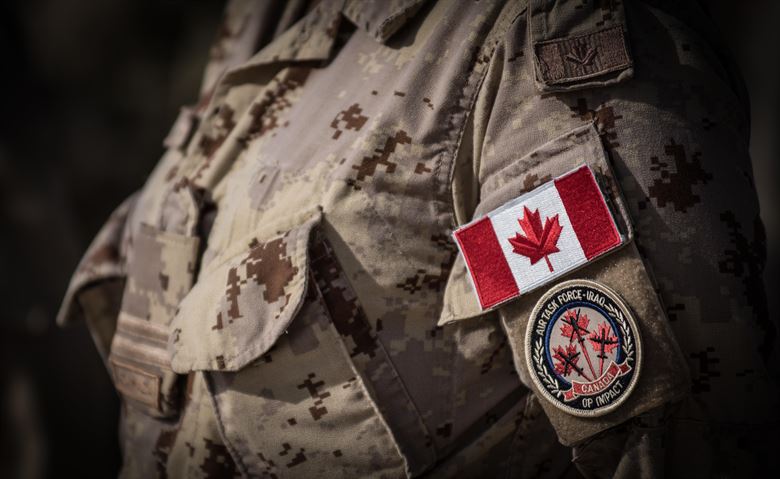Healing the spirit after moral injury on the front lines
Therese Kehler - 11 November 2020

Smith-MacDonald is part of several HiMARC research projects that gather data to better understand and provide therapeutic help to people suffering from moral injury.
Are the souls of people serving on society’s front lines being damaged? And, if so, can they be healed?
To Lorraine Smith-MacDonald, a clinician-scientist with expertise in mental health, trauma and spirituality, these wounds are as real as the anguish she hears in the voices of soldiers, veterans and public safety personnel who have experienced trauma on the job.
“It’s not just what happens to people physically when they go through trauma but what happens to them as human beings,” said Smith-MacDonald, a postdoctoral fellow at the Faculty of Rehabilitation Medicine’s Heroes in Mind, Advocacy and Research Consortium (HiMARC).
Smith-MacDonald’s research specializes in the little-studied field of moral injury, a trauma syndrome that often goes hand in hand with post-traumatic stress disorder (PTSD).
PTSD is often rooted in a terrifying event done to a person, like a battlefield attack or the Fort McMurray wildfires, while moral injury is the result of a personal belief or value being violated — an action taken by someone, or the inability to act, she said.
Where PTSD usually manifests in physiological reactions — flashbacks, nightmares, hyper-vigilance — moral injury shows up as emotional, mental and spiritual distress, deep-seated feelings that can lead to a variety of problems including depression, substance abuse and family breakdown, said Smith-MacDonald.
To determine if someone has a moral injury, one must listen to the words people are using.
“Things like guilt and shame or anger, disgust,” she said. “Unredeemable, unforgivable, the monster under the bed, unhuman, contaminated.” One of the first doctors to identify the concept of moral injury described it quite simply as people becoming undone.
Smith-MacDonald remembered interviewing a soldier who had been posted to the former Yugoslavia in the 1990s. A new father at the time, the man was torn by military orders to ignore the cries of children outside the base, begging to be allowed in, because of a risk that the children were being booby-trapped. “He understood why, because … it was a security risk to let them in, but he said, ‘You know, I can never forgive myself.’”

Researchers today are worried about health-care workers treating COVID-19 patients, who may face decisions about who gets treatment based on the availability of intensive care unit beds, essential medicines or ventilators. Decisions made might lead not only to negative mental health outcomes for workers but also to moral injury.
Smith-MacDonald is part of several HiMARC projects that gather data to better understand and provide therapeutic help to people suffering from moral injury. Their work was recently awarded $376,000 in funding from the Department of National Defence (DND).
One of the DND-funded projects is being conducted at the Glenrose Rehabilitation Hospital and uses virtual reality therapy called 3MDR (Multi-modular Motion-assisted Memory Desensitization and Reconsolidation) to address moral injuries suffered by military members who have not previously responded to PTSD treatment.
3MDR involves a patient walking on a treadmill in front of a floor-to-ceiling screen showing images of the source of the trauma. As the patient describes each image and their physical sensations and emotions associated with it, their words are projected onto the screen.
“It’s been amazing to see the impact of the 3MDR intervention on people’s lives and relationships and their ability to reintegrate,” said Smith-MacDonald.
With her degrees in psychotherapy, mental health and spirituality, a stint as a civilian cadet chaplain and several jobs in health care, Smith-MacDonald’s background attuned her to recurring themes of moral injury and questions of meaning, purpose, connection, beliefs and values.
“In the great blender of trauma, people don’t just come to you with one issue, they come to you with both spiritual and mental health needs.”
When the Diagnostic and Statistical Manual was updated in 1980 to include PTSD, it gave people suffering from it a language to describe what they were going through, she said.
But moral injury research is still in its infancy. The definition is evolving, the symptoms and impacts are still not fully understood and, as a result, its sufferers can feel isolated by a lack of language and common understanding, she said.
One of HiMARC’s research projects is examining whether moral injury is a factor among police, fire, ambulance, EMS and corrections workers. An eventual goal, said Smith-MacDonald, is to create educational modules to help public safety personnel become aware of what they are experiencing.
But the immediate gratitude of focus group participants has been humbling and powerful, she said.
“To have public safety personnel say to me, ‘This is what I’ve been struggling with for years, and I had no idea. And now you’ve given me a language.’
“That’s so fulfilling for me because when you can name something, you give voice and credence, and there’s a power to that.”